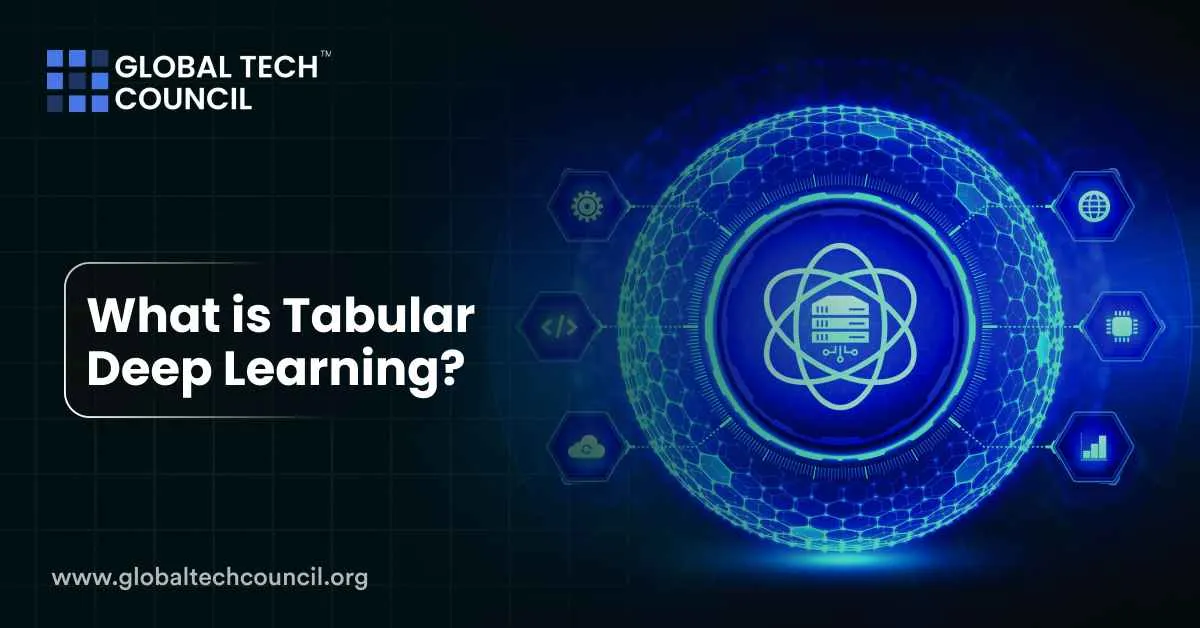
This type of data is found everywhere—spreadsheets, databases, customer records, patient histories, financial logs. For years, models like XGBoost or Random Forests were the best tools for such tasks. But now, new deep learning models are catching up.
In this guide, you’ll learn what makes tabular deep learning different, how it works, where it’s useful, and how it compares to traditional methods.
How Tabular Deep Learning Works
Tabular data contains a mix of numbers, categories, dates, and sometimes missing values. Deep learning models must handle all of these well to work in real scenarios.
Core Methods
- Multilayer Perceptrons (MLPs) are simple networks that connect every input feature to every neuron. They were the first deep models for tabular tasks.
- TabNet uses attention mechanisms to focus on important features for each prediction.
- TabTransformer and SAINT are transformer-based models that borrow ideas from natural language processing to handle tabular features.
- TabPFN is a pretrained transformer that can make predictions instantly on new datasets without extra training.
Each method has its strengths, and new techniques are being developed to improve accuracy, speed, and reliability.
Tabular Deep Learning vs Traditional Models
Traditional models like decision trees and gradient boosting often perform better on small datasets or when interpretability is needed. Deep learning shines when datasets are large, complex, or noisy.
Tabular Deep Learning vs Tree-Based Models
| Feature | Deep Learning Models | Tree-Based Models |
| Input Format | Requires numerical and embedded features | Handles raw tabular data easily |
| Handling of Categorical Data | Needs embeddings or preprocessing | Direct support for categories |
| Speed on Small Datasets | Slower | Fast and efficient |
| Transfer Learning | Supported with foundation models | Not supported |
| Performance on Large Data | Often better with enough training | May plateau |
Deep learning models are especially good at finding complex patterns when given enough data.
When to Use Tabular Deep Learning
Not all projects need deep models. You should consider tabular deep learning when:
- You have a large dataset with many features
- You want automatic feature selection
- You need end-to-end training without feature engineering
- You plan to reuse knowledge across tasks
In these cases, deep models can save time and improve results.
Popular Architectures for Tabular Data
Let’s look at some of the best-known models that support tabular deep learning.
Common Deep Learning Models for Tabular Data
| Model Name | Type | Key Feature | Best Use Case |
| TabNet | Attention-based | Learns which features to focus on | Business data with mixed inputs |
| TabTransformer | Transformer-based | Learns from relationships between features | Large structured datasets |
| SAINT | Hybrid model | Uses row and column attention | High-dimensional tabular data |
| TabPFN | Pretrained transformer | Zero-training inference for small datasets | Fast experiments or real-time decisions |
| TabM | Ensemble-inspired | Combines multiple weak learners inside a net | Reduces overfitting |
These models are rapidly improving and now match or exceed tree-based methods in many benchmarks.
Advantages and Limitations
Advantages
- Handles high-dimensional features well
- Learns complex interactions without manual work
- Supports transfer learning across similar datasets
- Reduces need for data cleaning in some cases
Limitations
- Can be slower to train on small datasets
- May require GPU resources
- Still lacks strong interpretability in many cases
Deep models also need more care when dealing with missing data, which is common in real-world tables.
Tools and Frameworks to Explore
If you’re just getting started with tabular deep learning, here are some tools to try:
- PyTorch Tabular – A user-friendly wrapper for tabular DL
- FastAI – Supports tabular datasets with built-in preprocessing
- TabNet (by Google) – Available through PyTorch and TensorFlow
- TabPFN – A pretrained transformer for fast predictions
- EconML and DoWhy – For causal tasks on tabular data
These libraries reduce the need to build from scratch and can handle complex datasets with ease.
How Tabular Deep Learning Is Evolving
Recent research is pushing tabular deep learning in new directions:
- Pretrained models like TabPFN use synthetic data to generalize across tasks
- Retrieval-based models like TabR combine memory with predictions
- Graph-enhanced models treat data as a network instead of a table
- Time-aware tabular models are emerging for financial and sensor data
This shows the growing interest in solving tabular problems with more flexible and powerful tools.
Where It Fits in Your Career
If you work with structured data in sectors like finance, healthcare, or e-commerce, learning tabular deep learning will boost your toolkit. It’s especially useful for AI developers, data engineers, and ML specialists who want to move beyond traditional modeling.
To grow in this space, start with a Data Science Certification or explore Deep tech certification from Blockchain Council. For business-focused professionals, the Marketing and Business Certification is a good way to understand how deep learning impacts real-world decisions.
Final Takeaway
Tabular deep learning brings the power of neural networks to the most common type of data—structured tables. It works best for large or complex datasets, where patterns are hard to spot manually.
Although traditional models like XGBoost still lead in many cases, the gap is shrinking fast. With tools like TabNet and TabPFN, deep learning is becoming more practical and powerful for real-world use.
If you’re already working with tabular data, now is the time to explore what deep learning can offer.
Leave a Reply